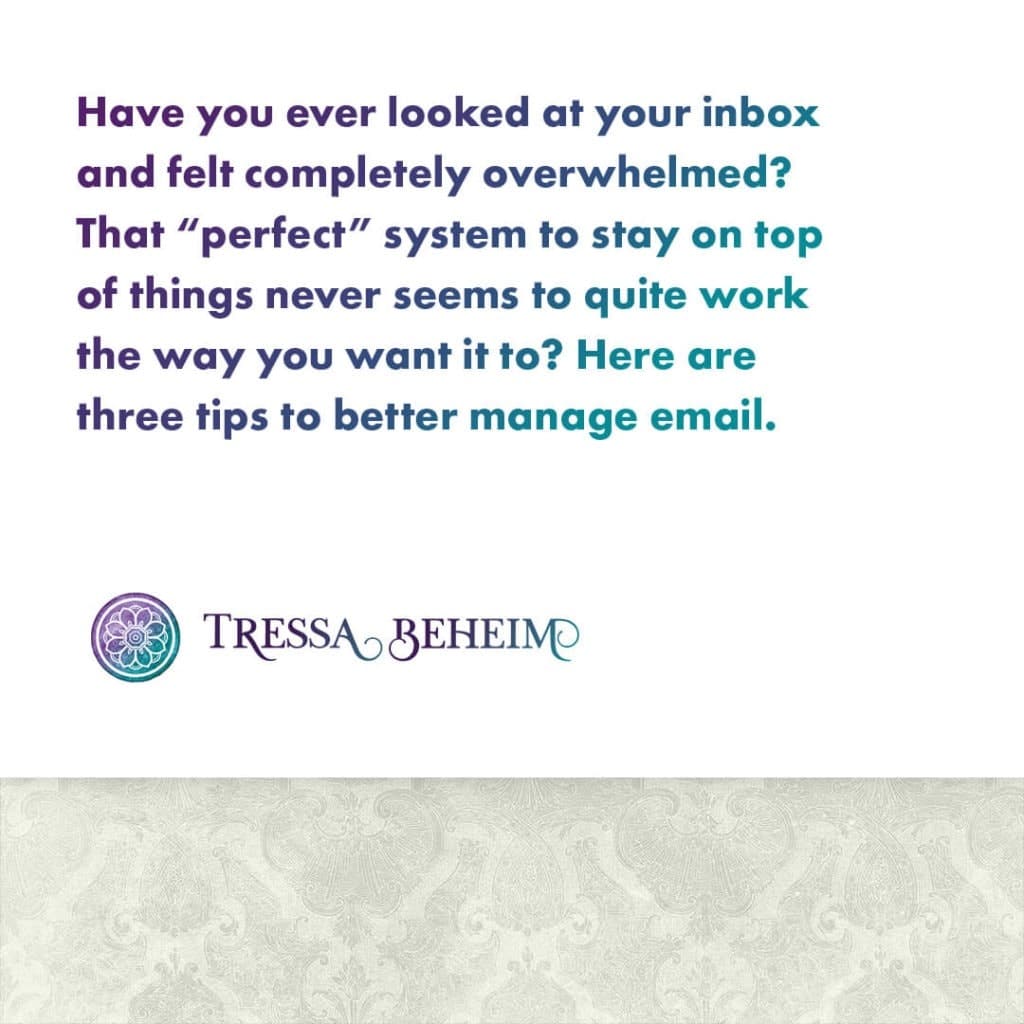When you run an online business, your email inbox can feel like a constant source of stress. There are tons of how-to guides and tips on how to better manage email that can be really helpful.
But, I find they’re not always enough when your inbox is the dumping ground for your business. There are three key things I recommend to clients when we get started to help better manage email:
- Get project management out of your inbox
- Get customer service out of your inbox
- Get a scheduling tool
These are three things that clutter your inbox immensely and make it incredibly difficult to better manage email no matter how hard you try.
Let’s look at why.
Why Project Management Doesn’t Belong In the Inbox
When making the shift from solopreneur with a few contractors to CEO with a regular team, it becomes essential to find effective and efficient methods of managing projects and day-to-day tasks. Out of habit, some owners continue to keep this in the inbox.
But, you’ll likely find it impossible to manage tasks from the inbox as the business grows. The lack of structure turns into chaos very quickly, which results in struggles with both project management and email.
By removing project management from the inbox, it’s easier to effectively track tasks and ongoing projects plus it allows one to better manage email. So, it’s a win-win!
There’s no one project management tool that works for everyone so it’s important to check a few out before deciding. Some of my favorites are Basecamp, Clickup, and Todoist. Depending on your work style, something like Asana or Trello may also resonate.
Once you find a tool and get set up there, it’s important to actually use it! As the CEO, you set the tone for the business so leading by example is key! Removing project management from the inbox is an essential step to better managing email so don’t discount its importance because it can’t be ignored.
Better Manage Email By Removing Customer Service From Your Inbox
So many of my clients started as a one-woman shop so it makes sense that customer service ended up in their inboxes. However, as the business grows, keeping customer service in the owner’s inbox makes no sense and can become a huge productivity drain.
While these customer service emails are important and need responses, having them clutter up the owner’s inbox causes issues like:
- Delayed responses because the owner doesn’t have focused time to respond.
- Missed responses because they’re mixed in with all the other things.
- Lack of documented processes because they’re handled on the fly.
The first step to getting customer service out of the owner’s inbox is to decide whether a new email address is needed for support or for the owner. It’s sometimes easier for us to create a new inbox that is protected and given only to truly necessary contacts for the owner than to shift all the customer service out of the existing inbox. This generally depends on how things are set up and how entrenched the email address already is.
As the business continues to scale, using something like Helpscout or Zendesk may also become necessary. These tools have capabilities beyond the normal inbox that allow for workflow automation templates and internal notes back and forth between the team.
Stop Scheduling By Email
Another step to help better manage email is to take scheduling out of the inbox. The constant back and forth of scheduling (or rescheduling) via email is really inefficient and time consuming.
How many times have you had to go back and forth multiple times because appointments get booked between emails?
This is where tools like Calendly, Acuity, or ScheduleOnce come into play. These allow you to set up your availability based on your scheduling availability and then integrate with your real-time availability to show people what works right now. Of course, this requires using an online calendar like Google Calendar, iCal or Outlook, but it saves so much time what’s usually a huge win.
Implementing Your Inbox Strategy
Taking the time to be strategic about what actually ends up in your inbox is perhaps even more critical than all the inbox zero tips that focus purely on managing emails. Once you remove things like project management, customer service, and scheduling, you’re likely to have a much easier time establishing methods to better manage email.



